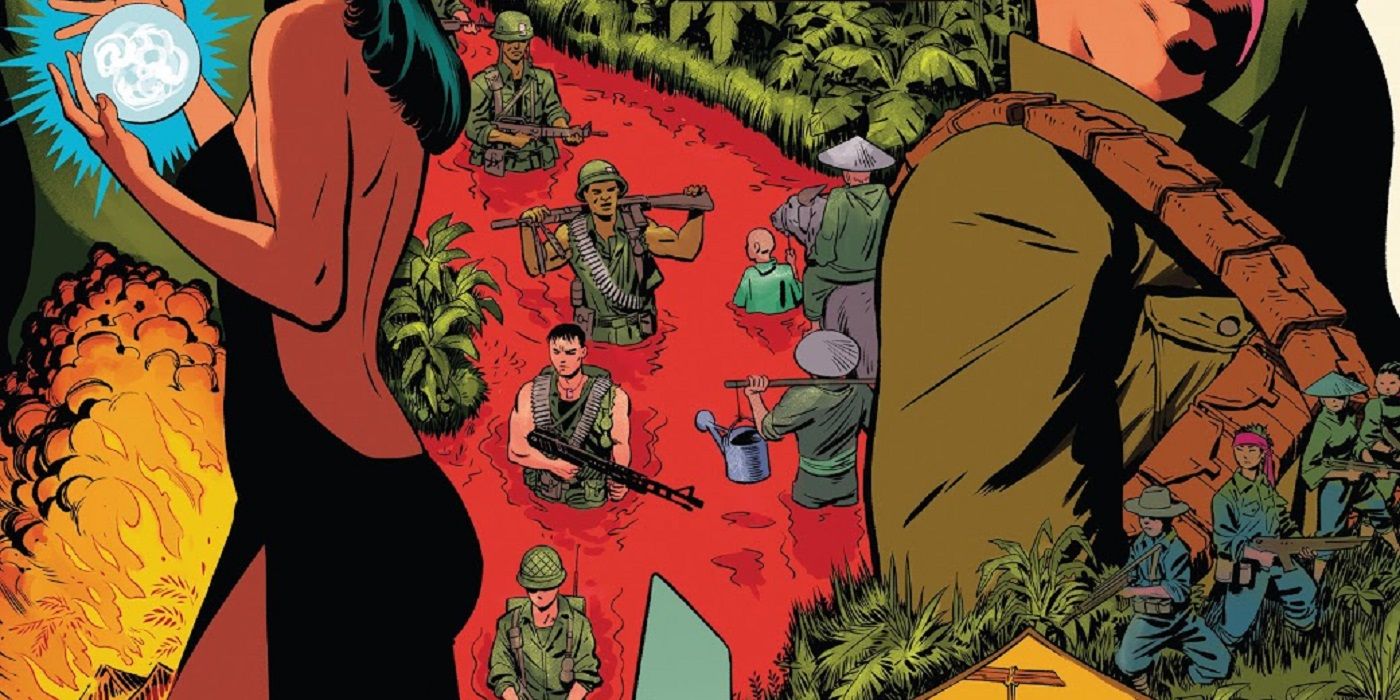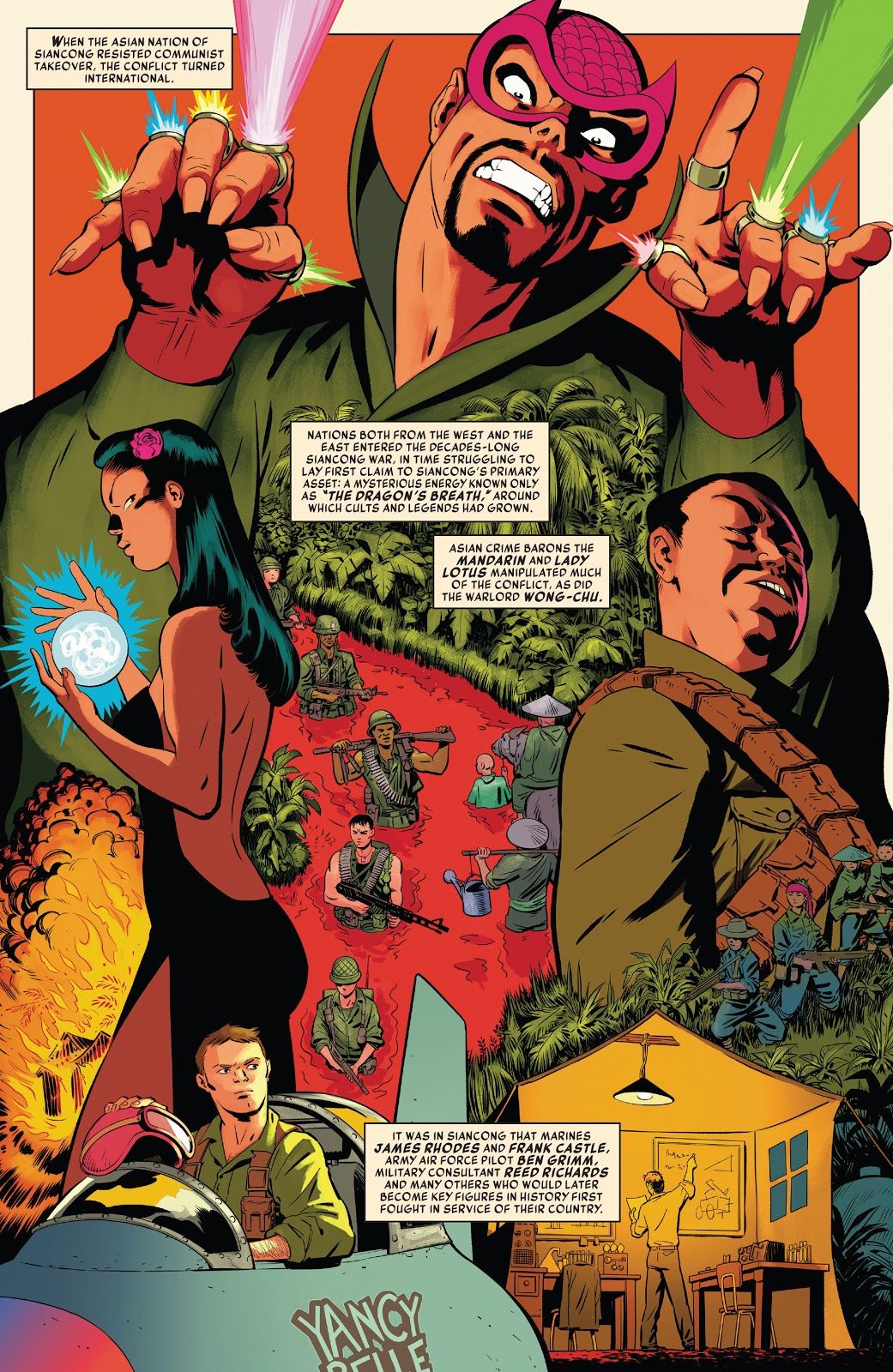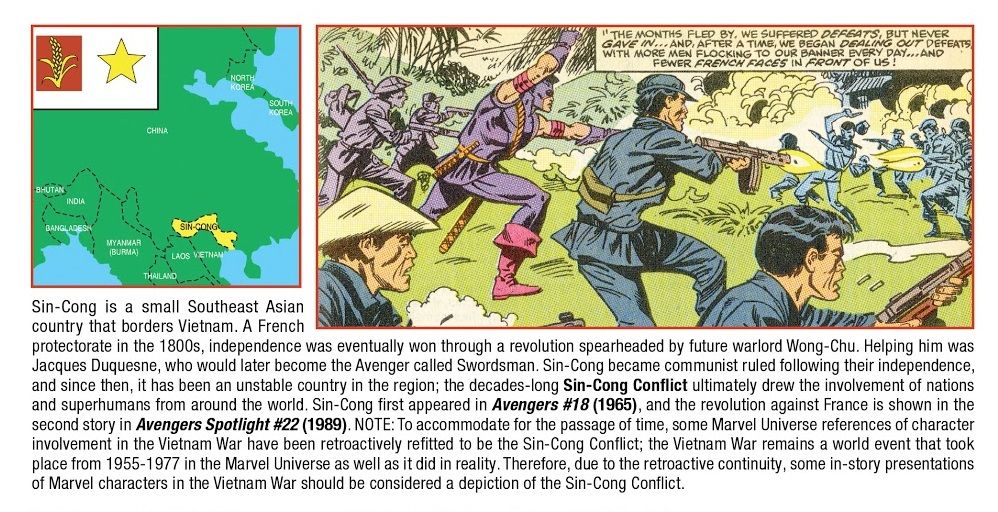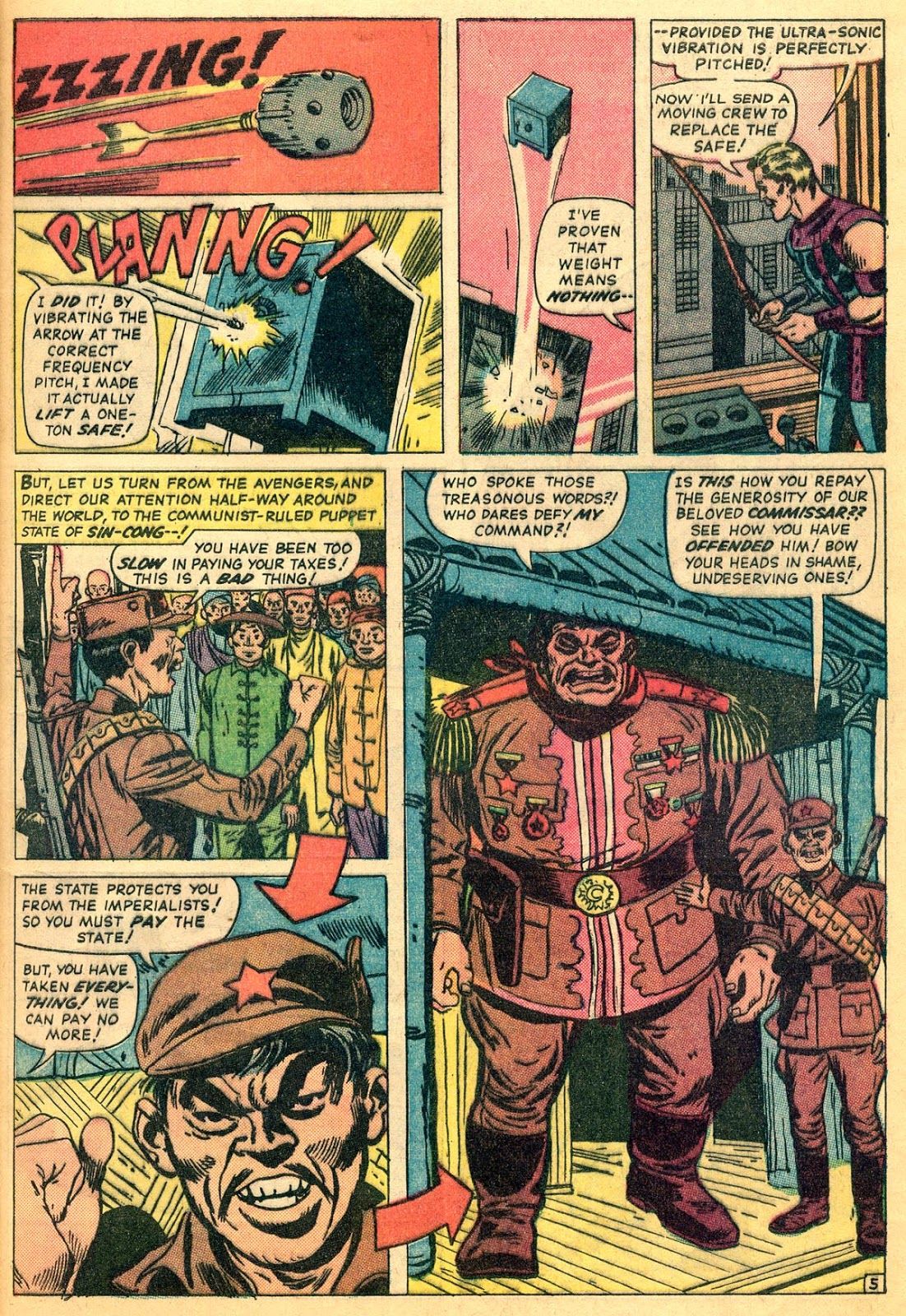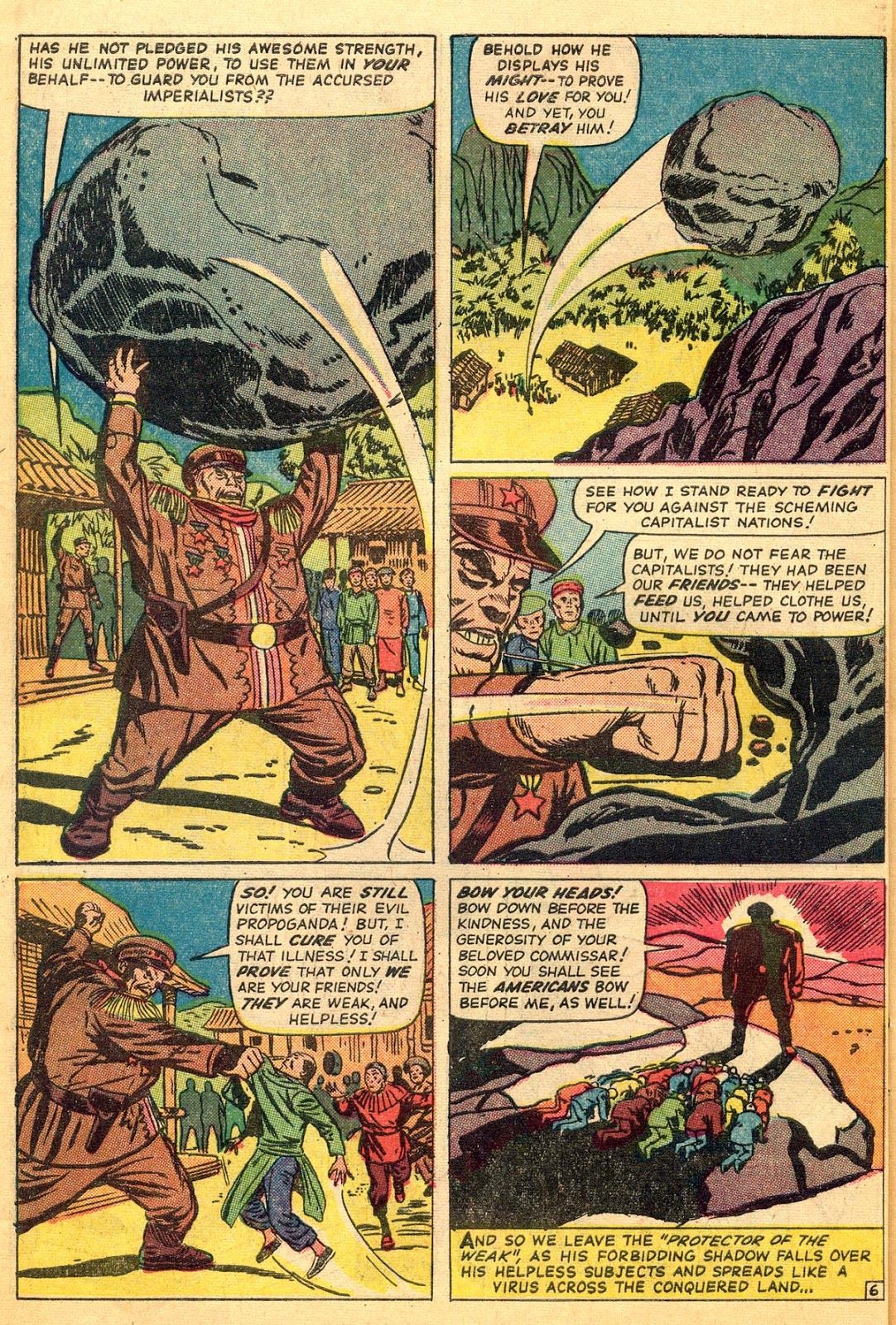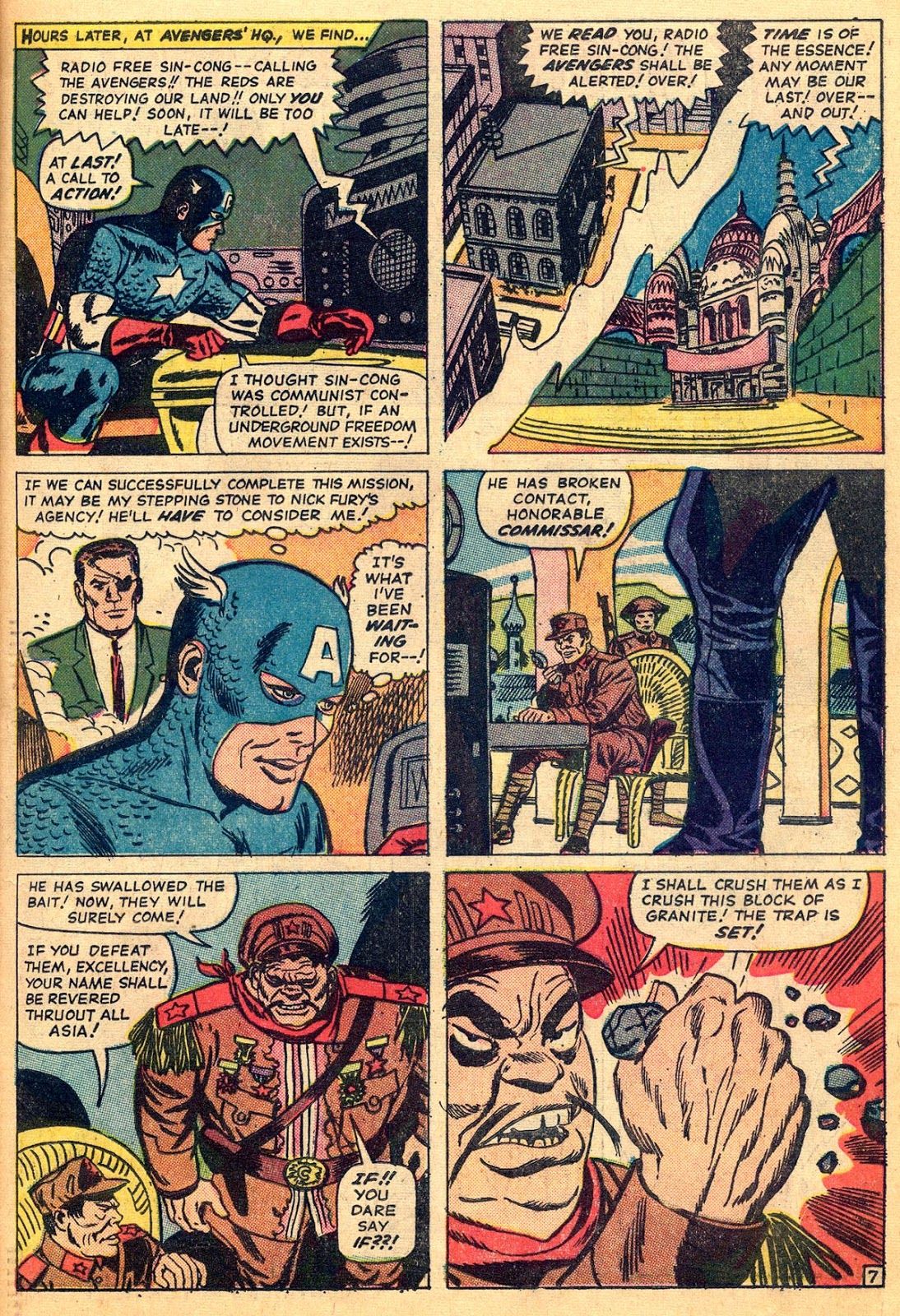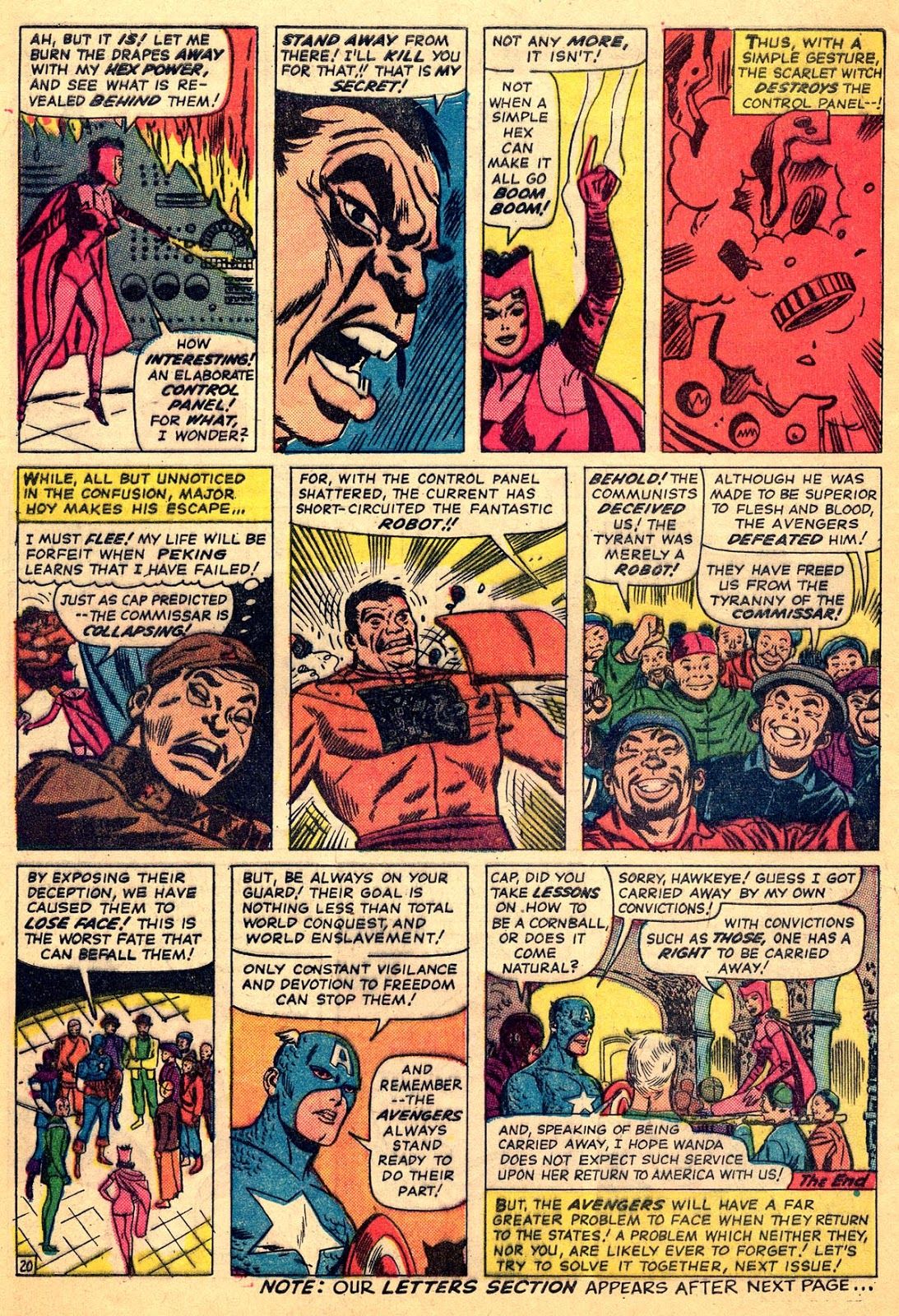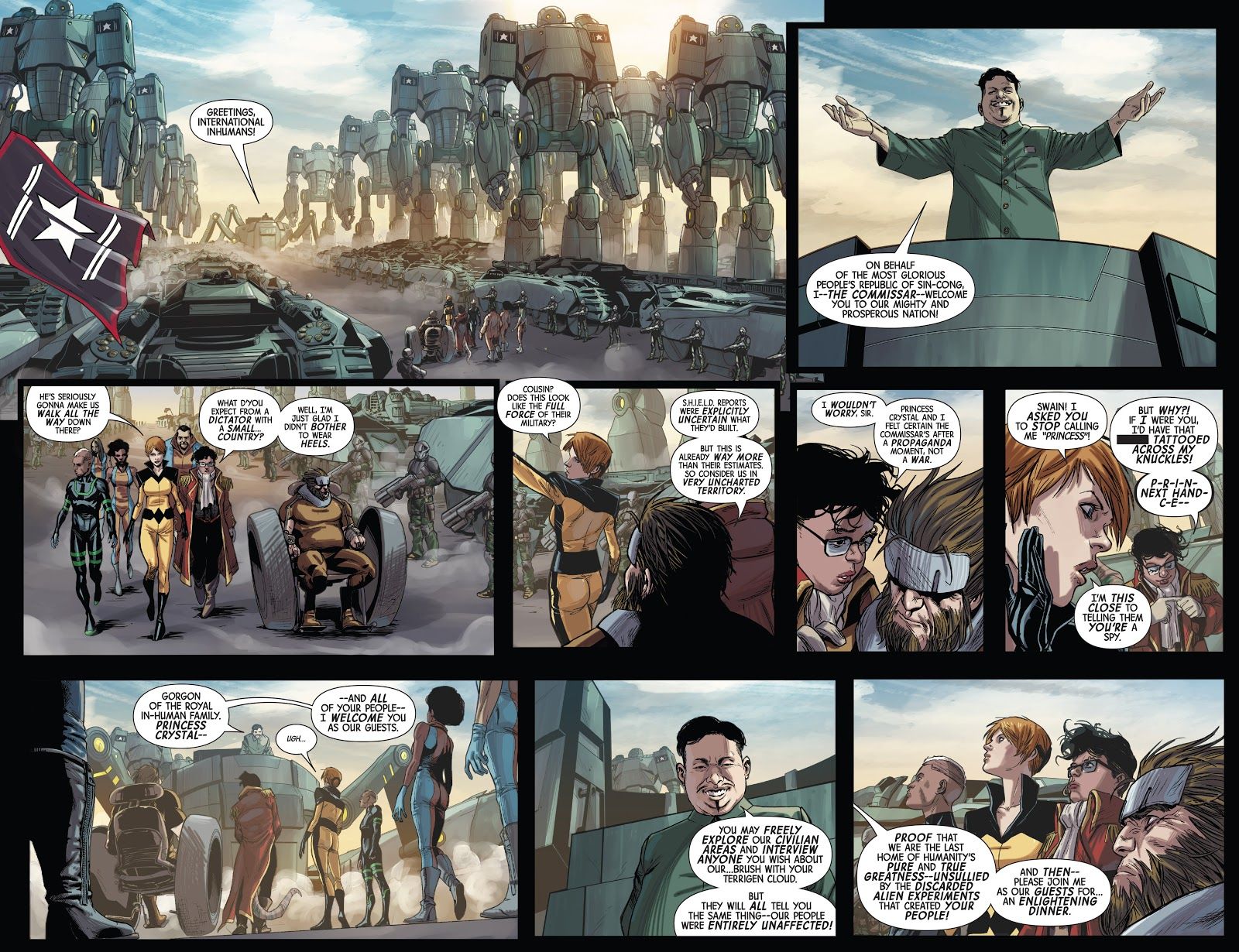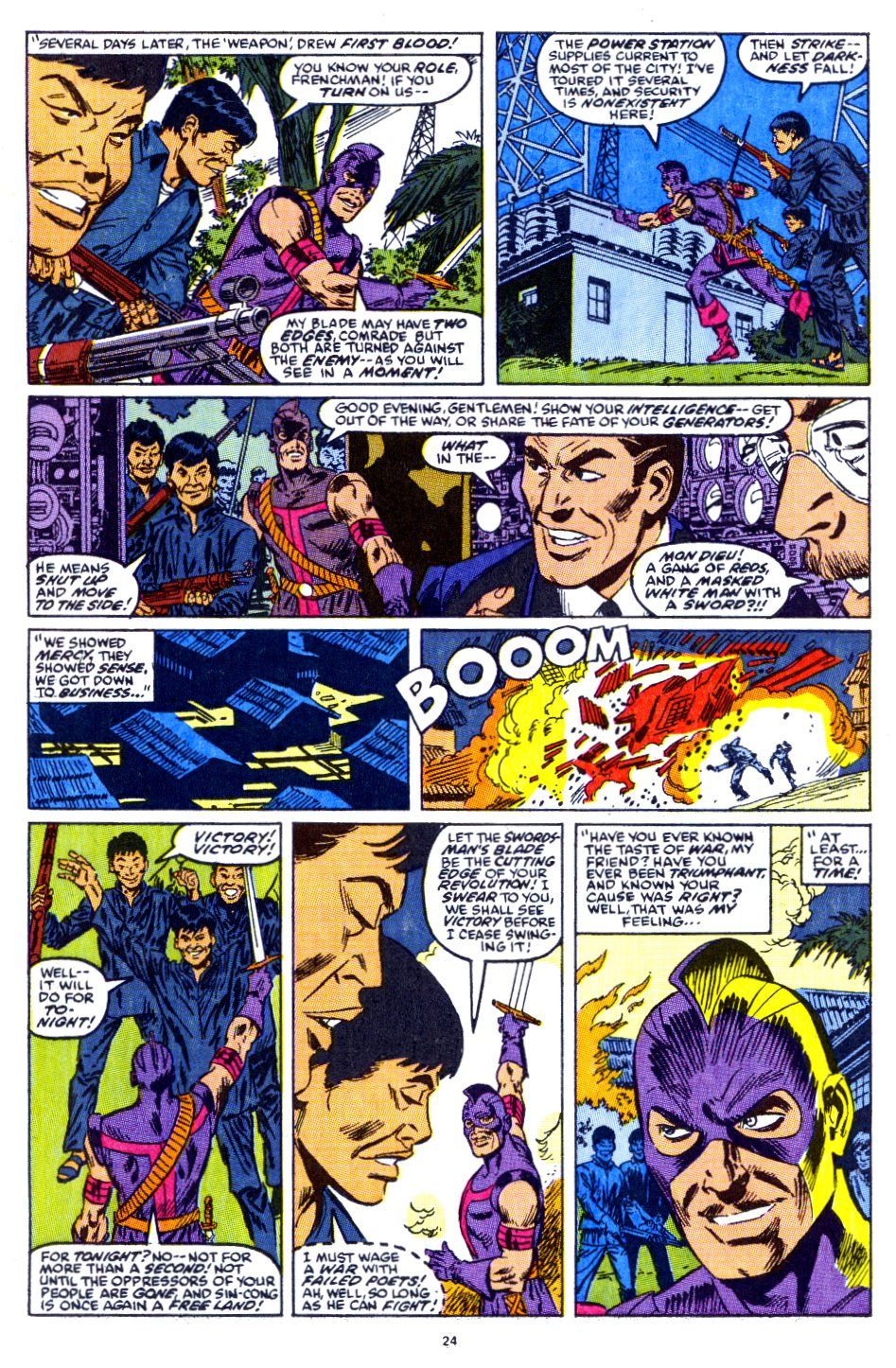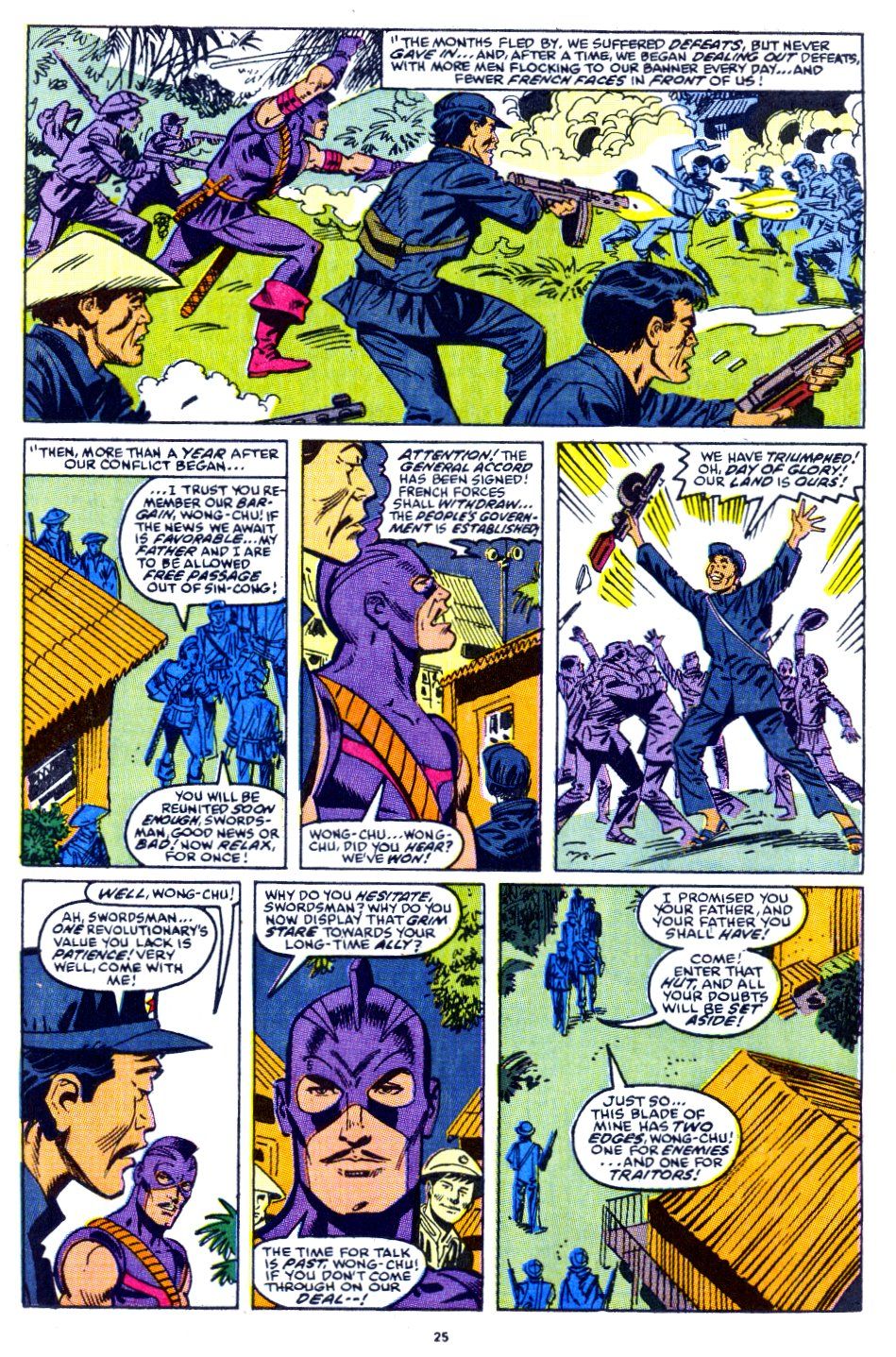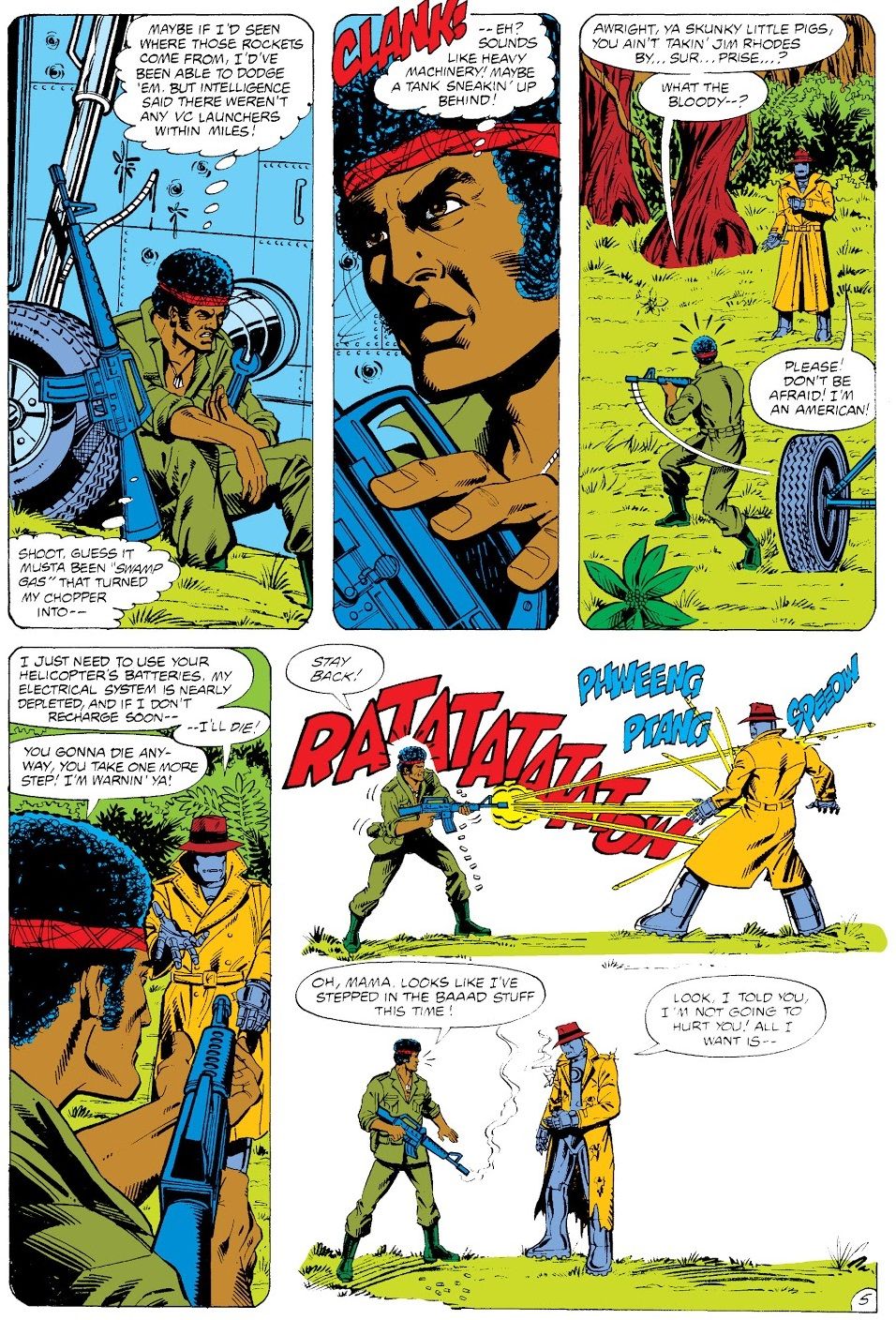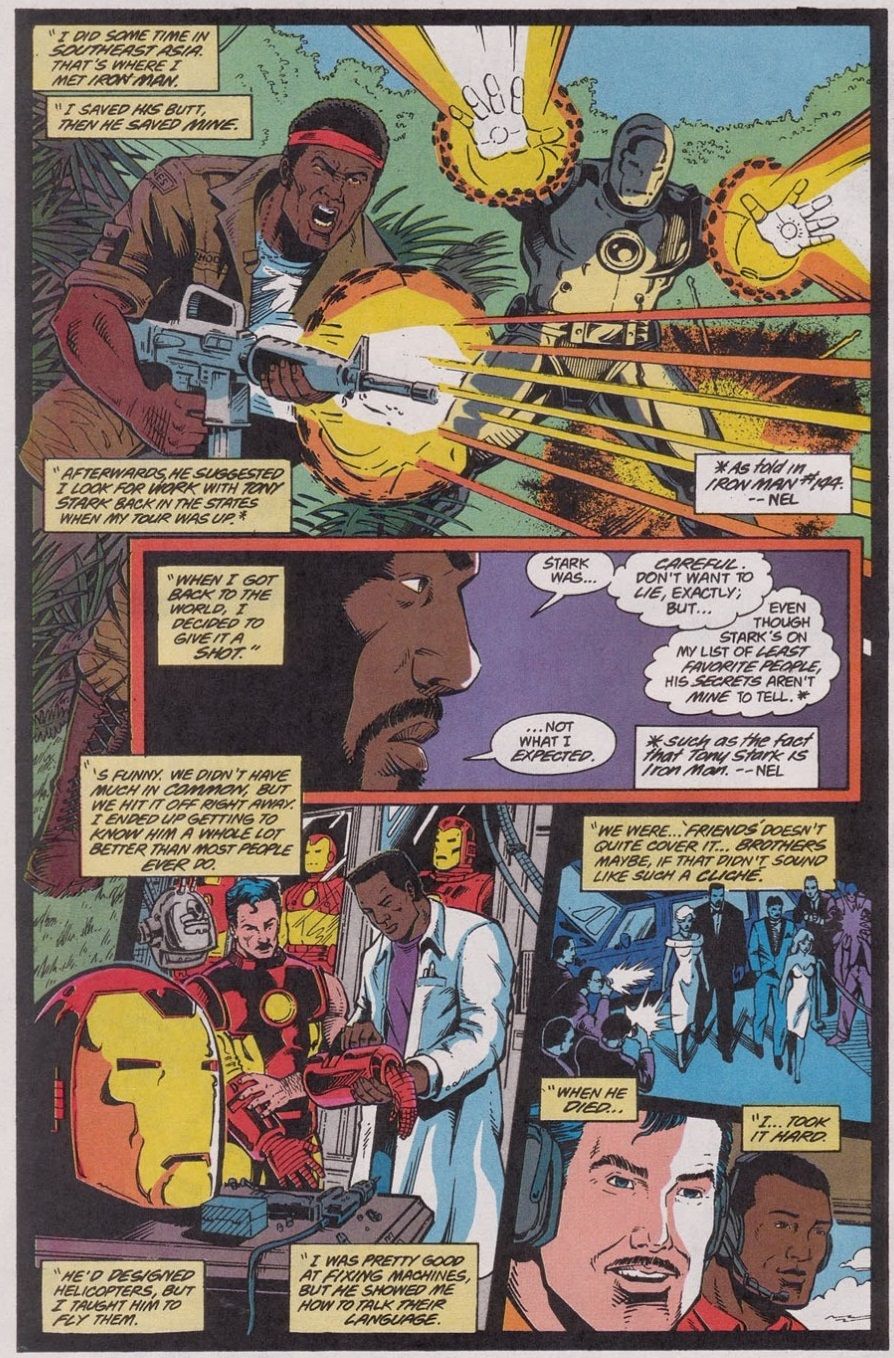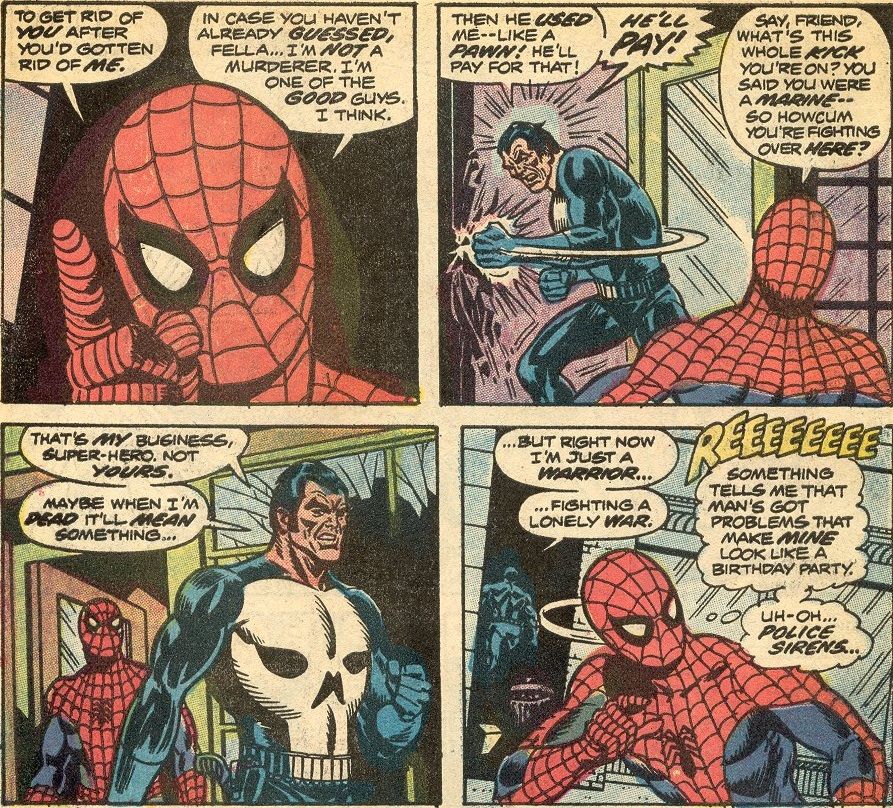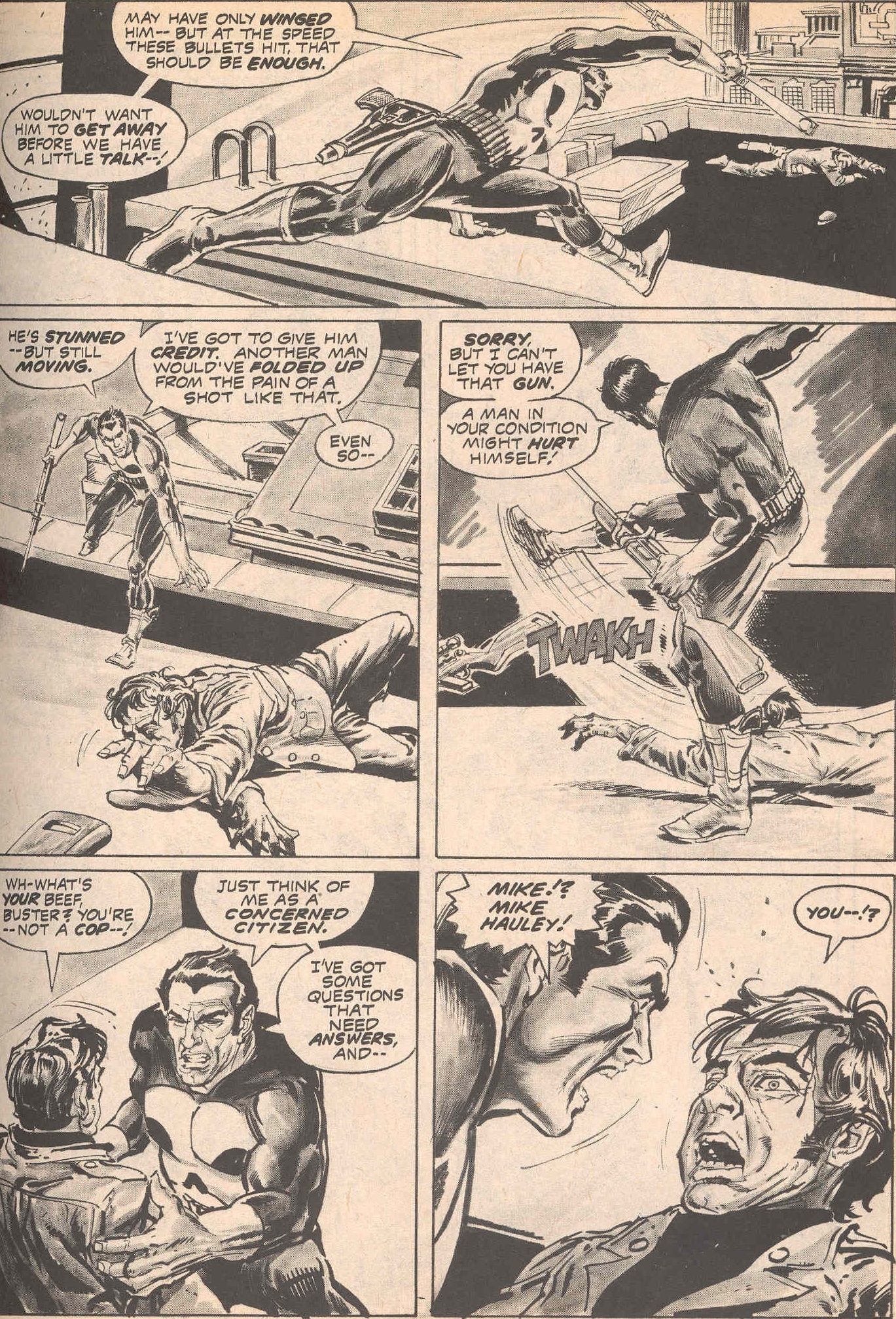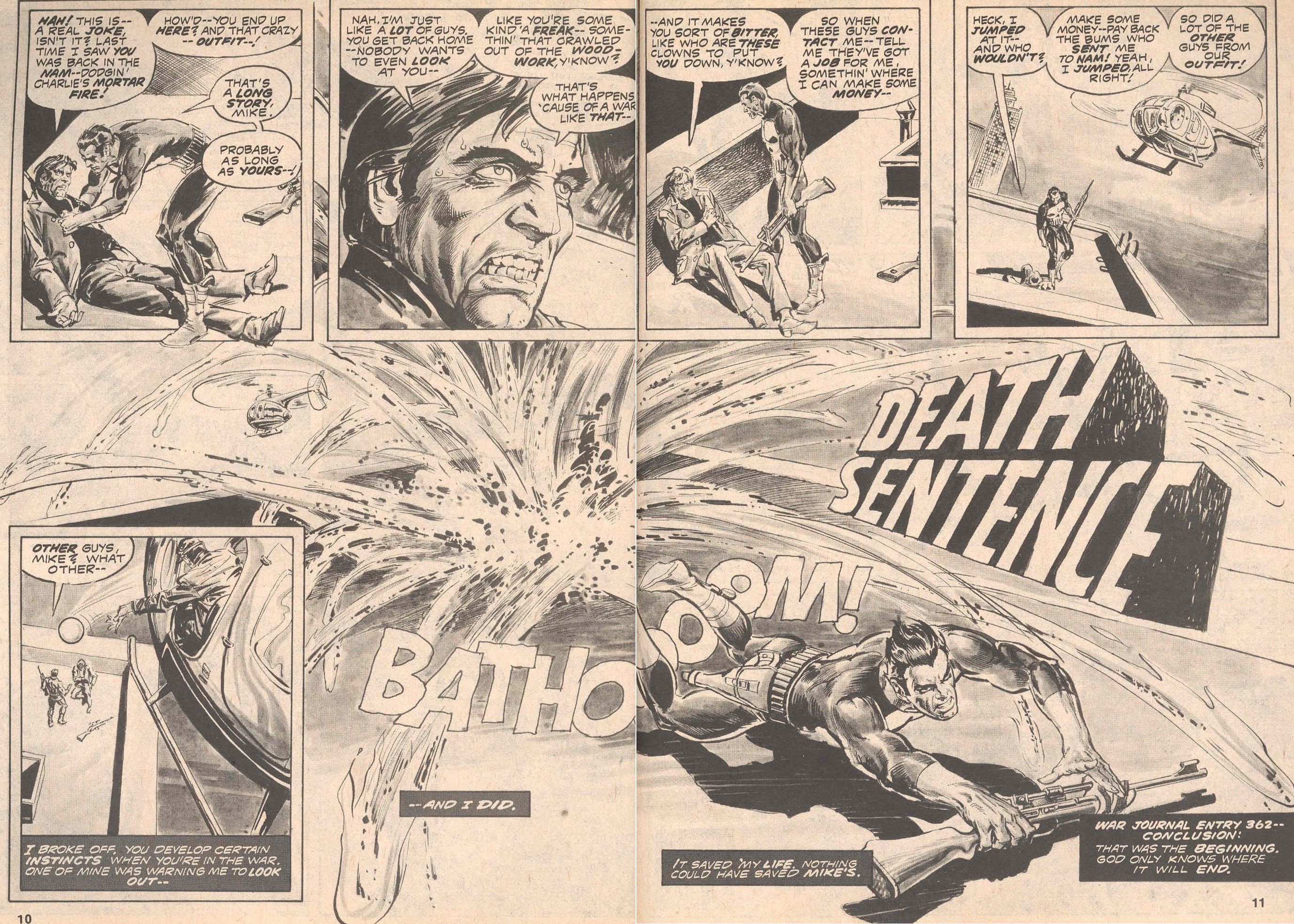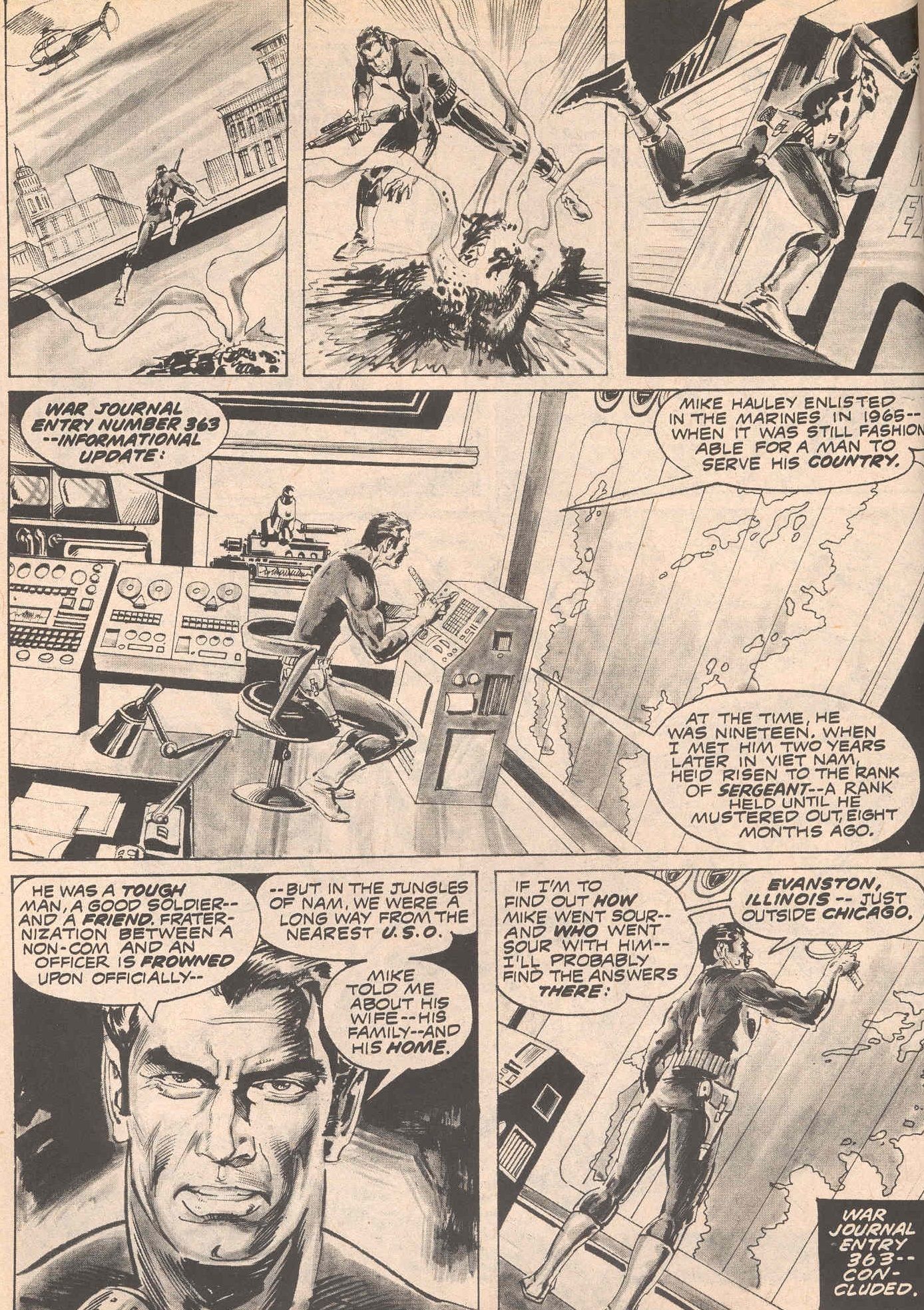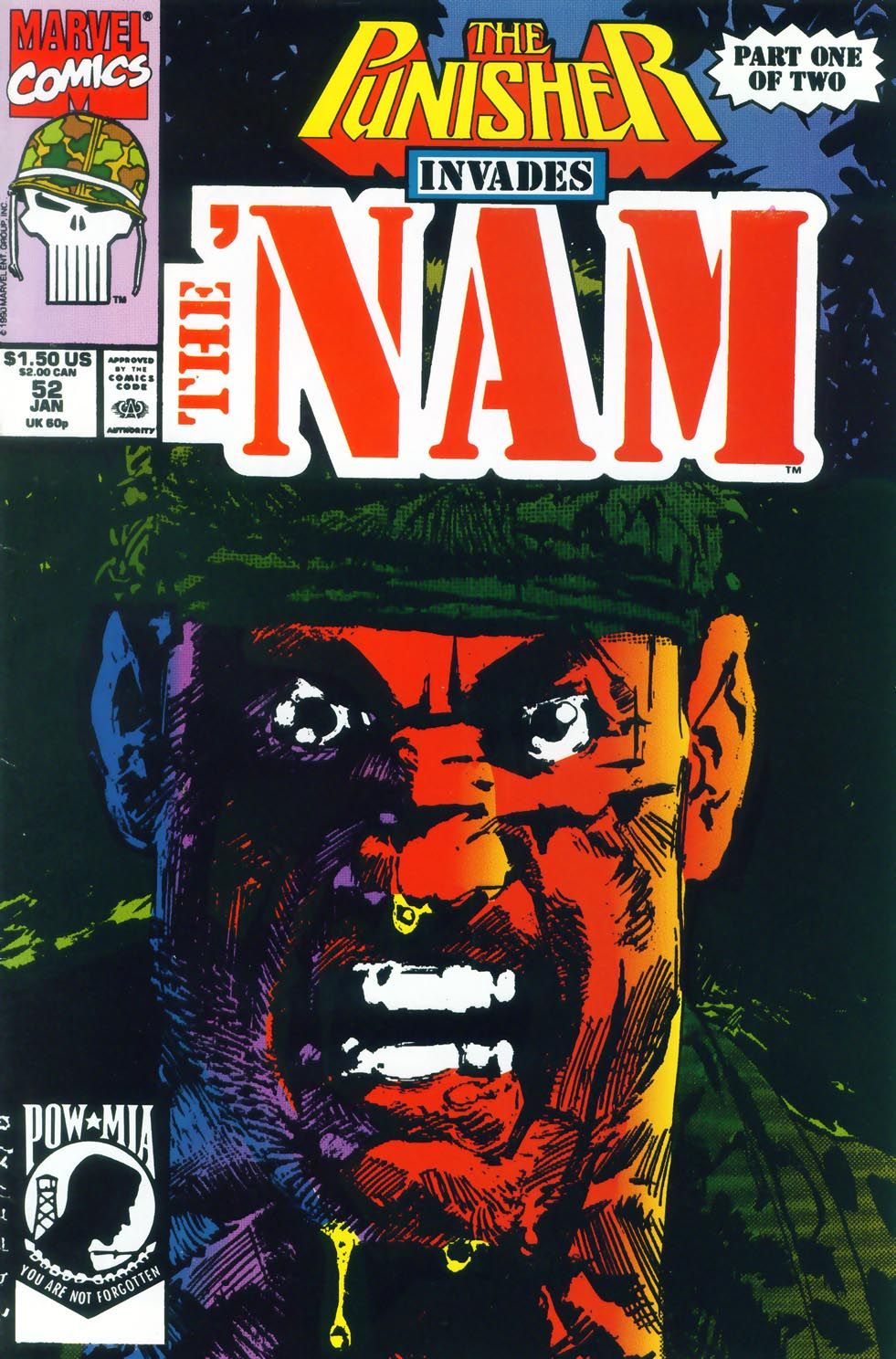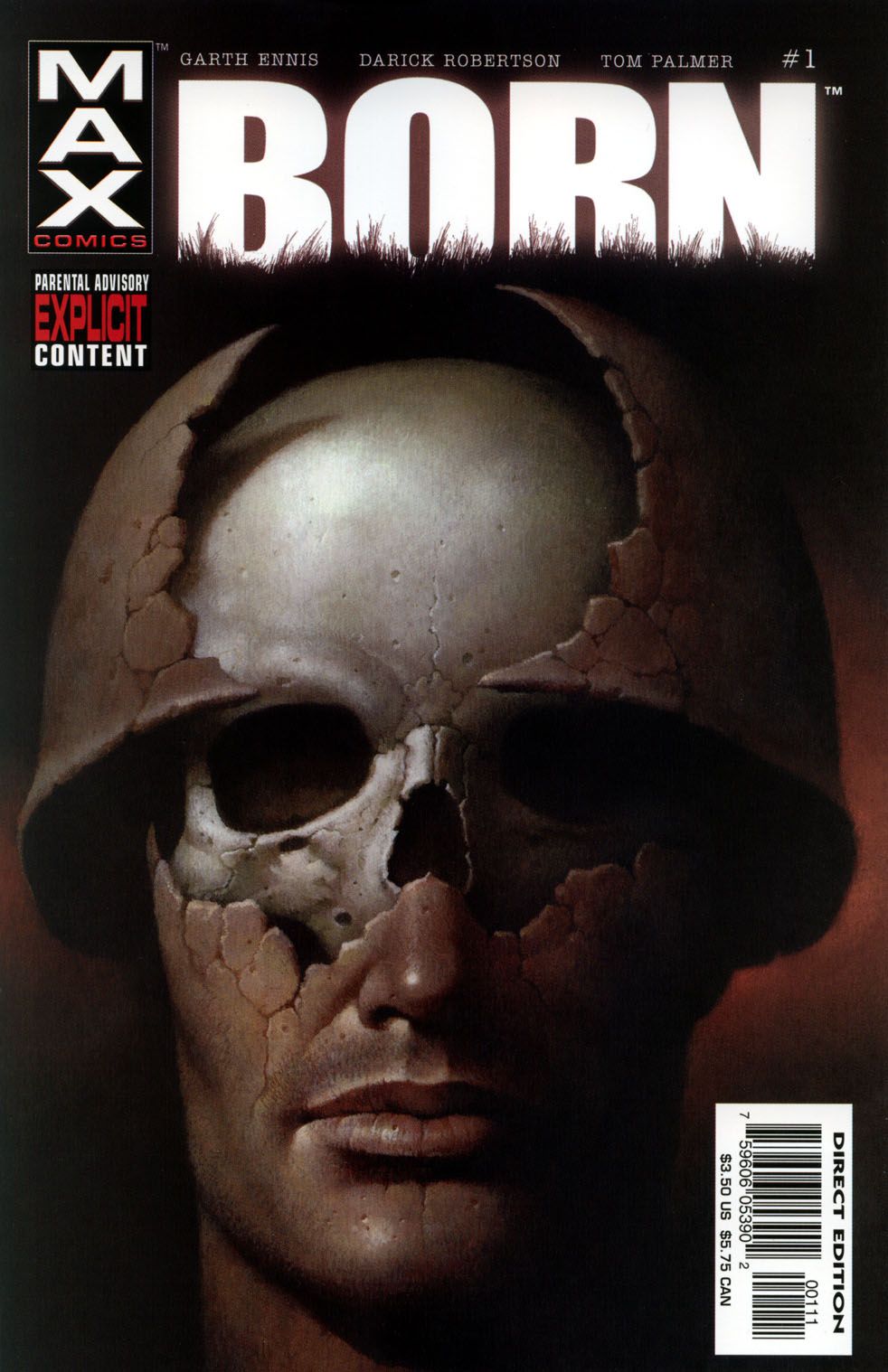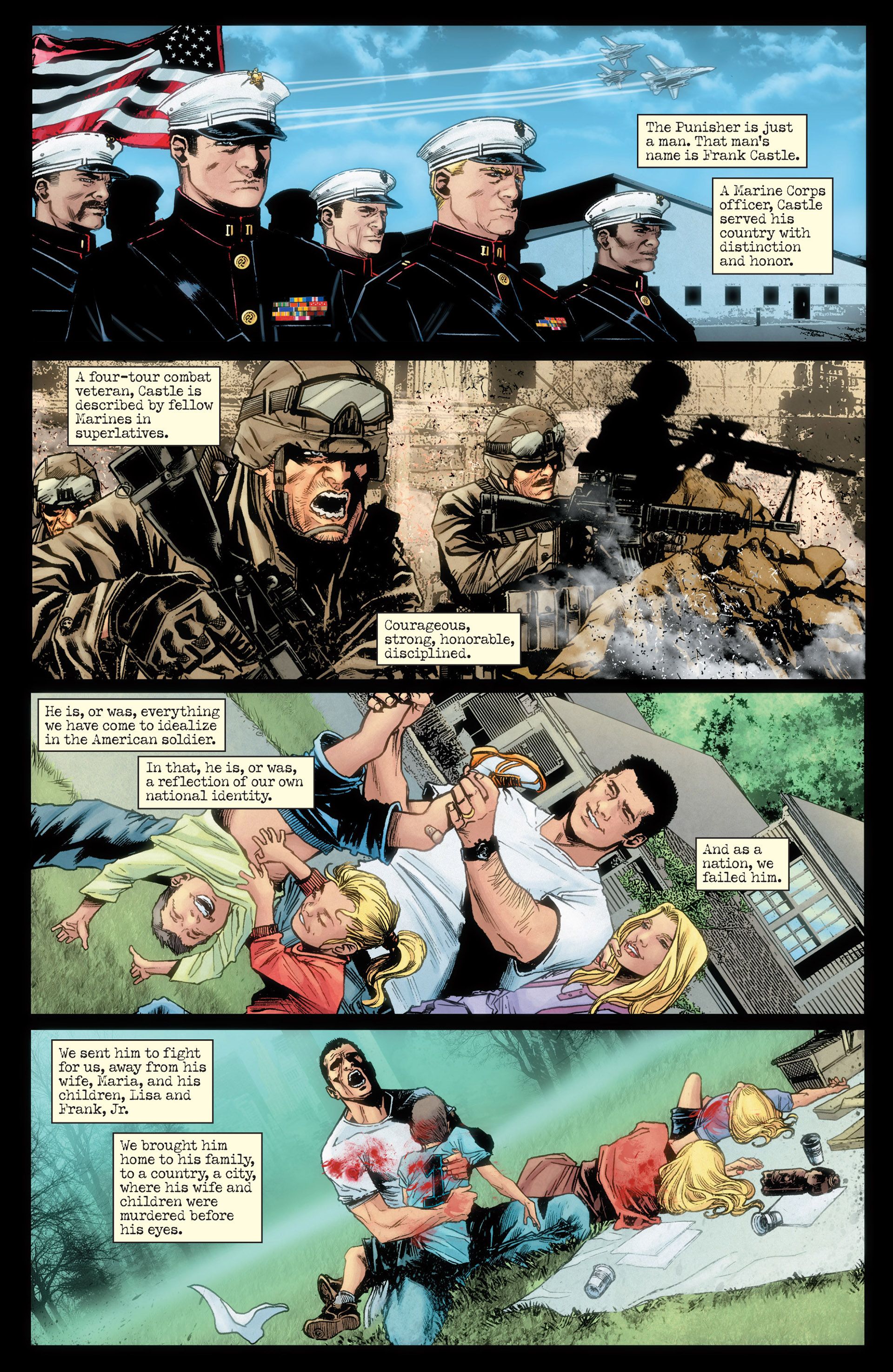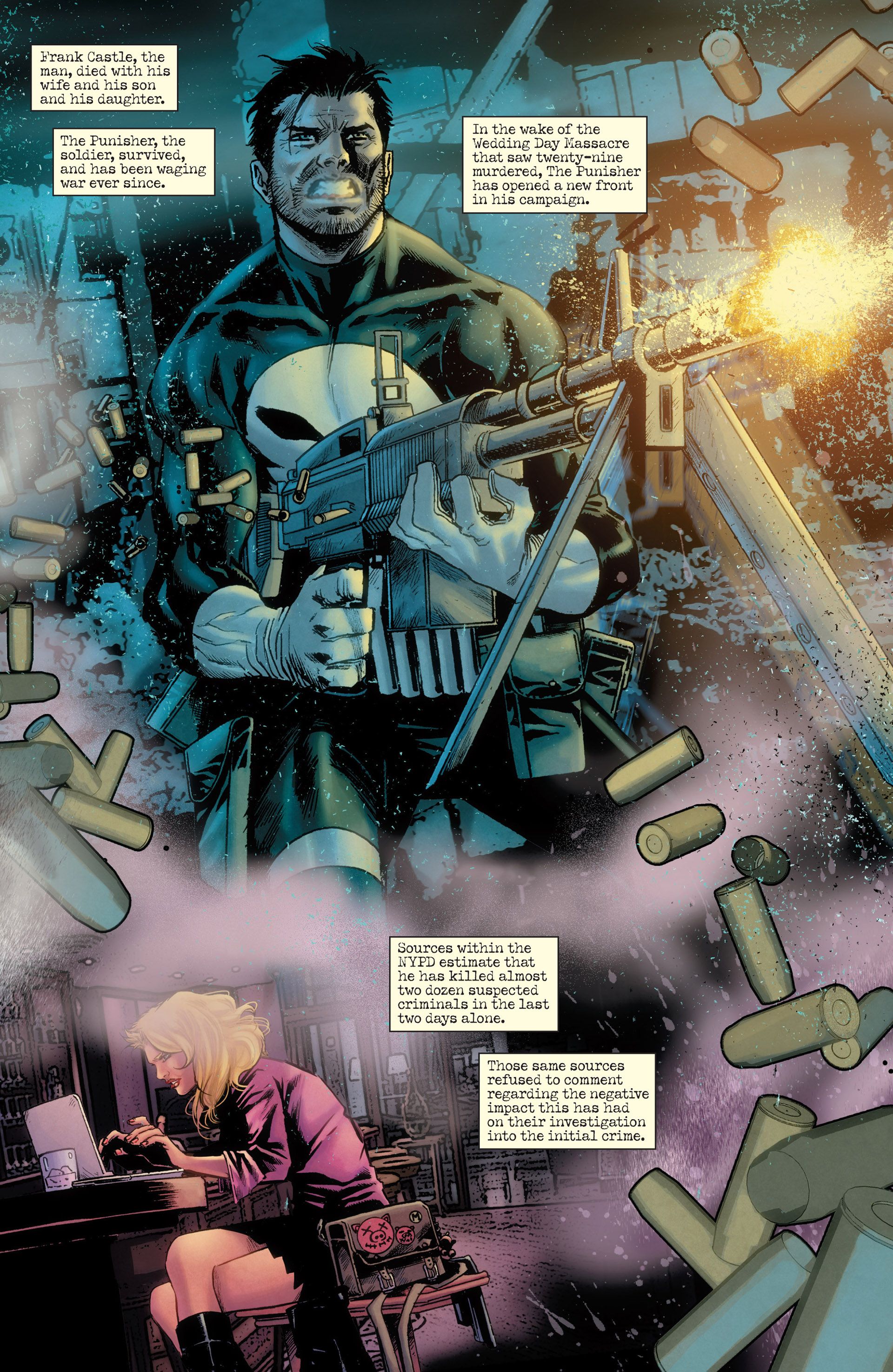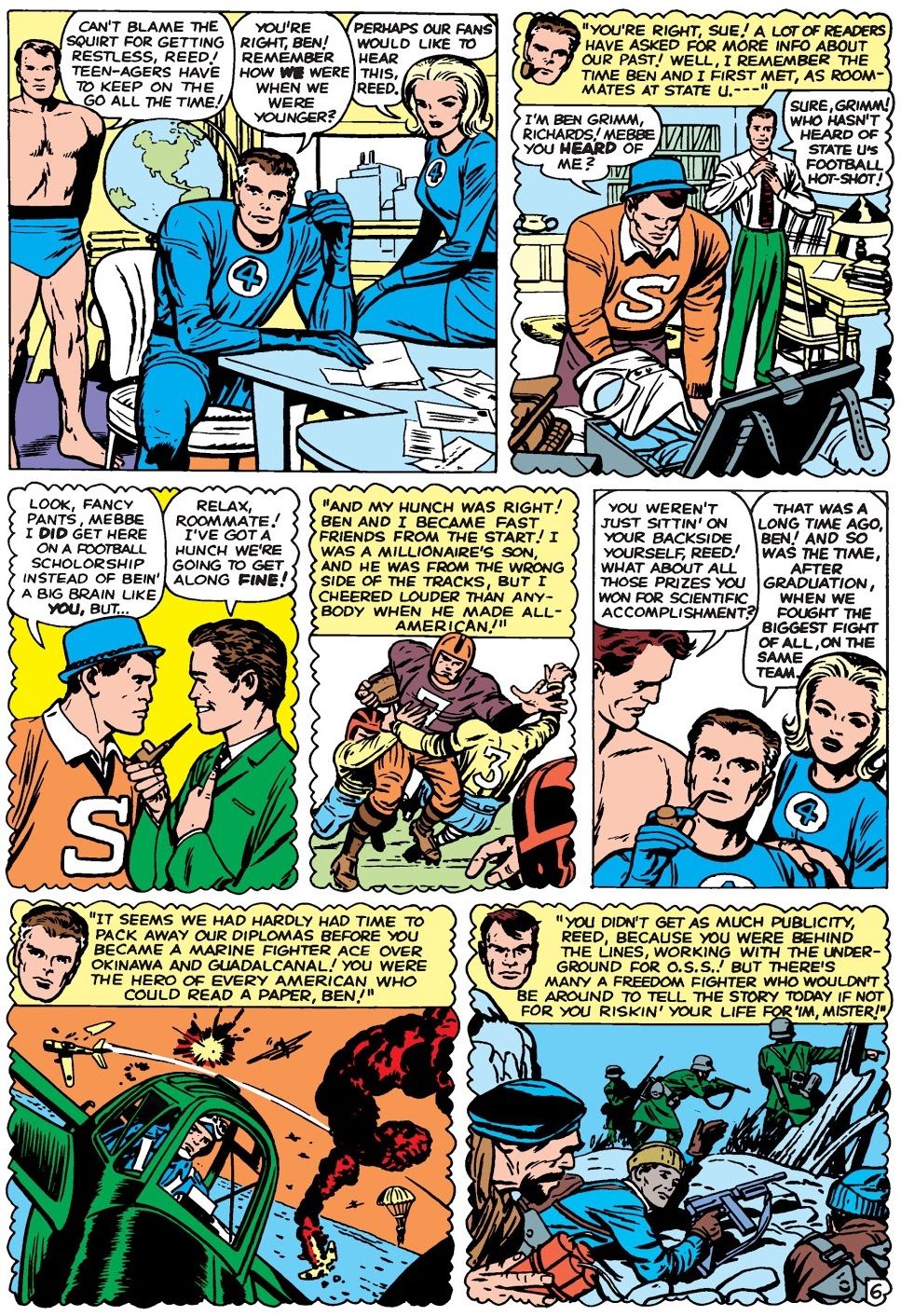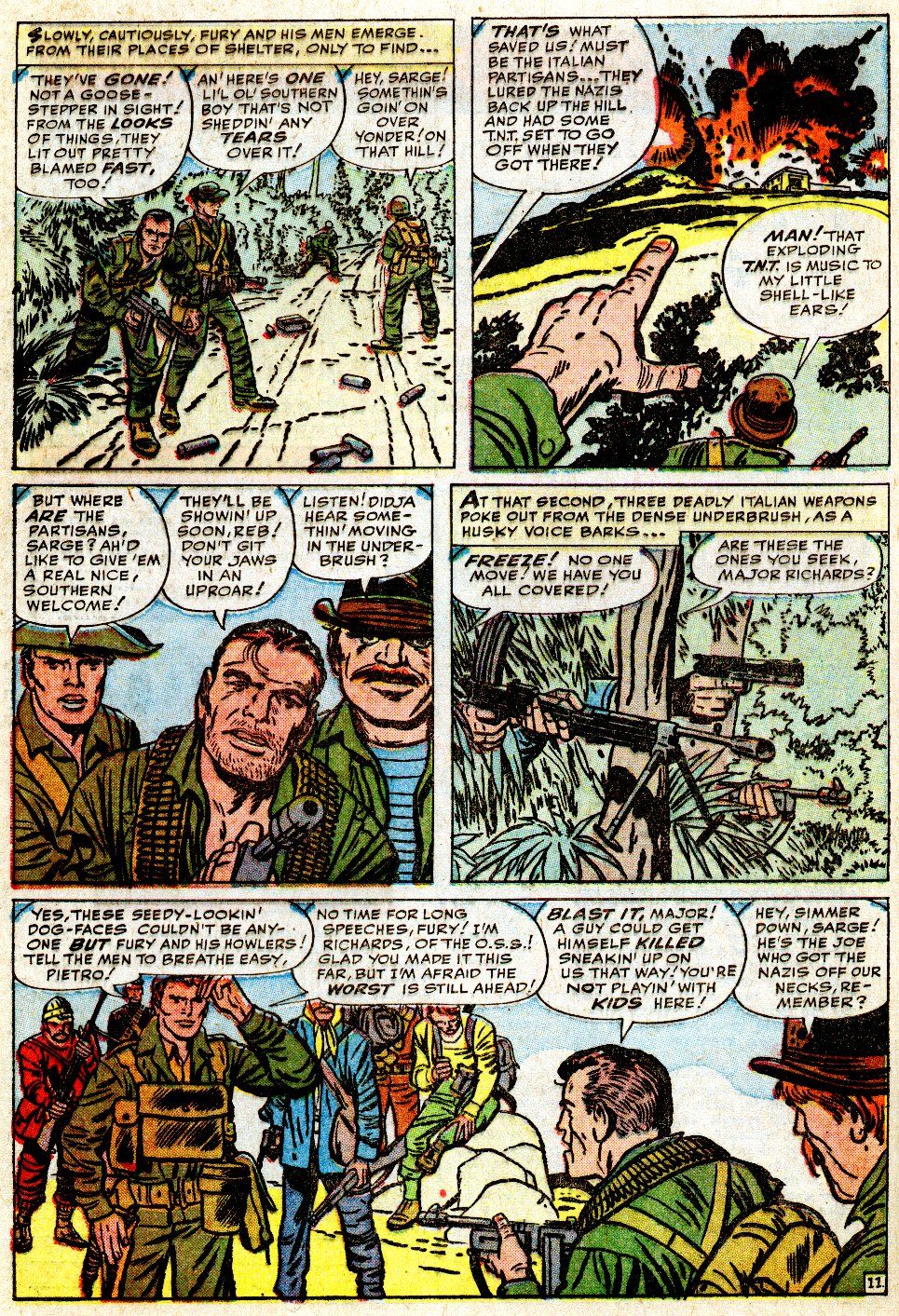WARNING: The following contains spoilers for History of the Marvel Universe #2, by Mark Waid, Javier Rodriguez, Alvaro Lopez and VC's Joe Caramagna, on sale now.
In the second issue of History of the Marvel Universe, a major shift occurs in the history of the Vietnam War in the Marvel Universe. The fascinating aspect of this change is that while the Vietnam War is the most affected by the retcon, it also has an impact on the World War II service of a few major Marvel characters.
The biggest aspect of the change is that a fictional Marvel country, Sin-Cong, is used as a stand-in for Vietnam in a reshaping of Marvel history that allows a number of characters to be removed from the year-specific conflict of the Vietnam War and World War II and instead allows them to be placed in the context of the fictional Sin-Cong Conflict that can move throughout history as Marvel's continuity evolves in the future.
The initial reveal is made late in the main story...
while it is later, in the annotations, that the implications are made explicit, that while the Vietnam War still occurred in the Marvel Universe, the Sin-Cong Conflict (Sin-Cong is misspelled in the story but is spelled correctly in the annotations) takes the place of the Vietnam War for a number of Marvel heroes.
However, it is interesting to note that there are some heroes who did not fight in the Vietnam War that Waid also took the opportunity to loop into this retcon, including two notable heroes who had never, to this point, had their war service officially retconned within the main Marvel Universe, despite it being obviously incongruous with their depicted ages for decades.
WHAT IS SIN-CONG?
Sin-Cong is a country in Asia that was introduced in 1965's Avengers #18 (by Don Heck, Stan Lee and Dick Ayers) that was obviously intended to be a riff on Vietnam (the Avengers' journey to Sin-Cong was recently featured in CSBG's From a Different Point of View feature).
We met their Communist rulers, including Major Hoy and the powerful being known as the Commissar, as they taunt their own people. Their citizens don't really have a problem with the Capitalists, but Commissar takes strong umbrage to their lack of hatred towards Americans...
Thus, a plan is hatched where they will lure the Avengers to Sin-Cong and defeat this symbol of American power and it would be a major propaganda coup.
As shown, the whole thing revolves around Captain America's willingness to allow the Avengers to invade another country just so that Cap could look good in the eyes of Nick Fury (who the good Captain was trying to get a job with at the time, since he was sad about how seemingly useless he was outside of the Avengers during this period). However, as it turned out, that was enough for Cap to have the Avengers invade a sovereign nation!
In the end, the Commissar is revealed to be a robot powered by General Hoy and Sin-Cong is seemingly freed....
However, many years later, in All-New Inhumans (by James Asmus, Charles Soule, Stefano Caselli and Andres Mossa), it is revealed that Sin-Cong was reconquered and now it was used as a stand-in for North Korea instead of Vietnam (as seen here where the Inhumans arrive in Sin-Cong in All-New Inhumans #2)...
A major factor in the current retcon occurred in Avengers Spotlight #22, in a story by Lou Mougin, Don Heck and Jose Marzan that established that the late Avenger, Swordsman, was born in Sin-Cong when it was a French protectorate. The story details the start of the Sin-Cong revolution....
This story makes the Sin-Cong situation even more explicitly like that of Vietnman and thus, thirty years later, Mark Waid is using the Sin-Cong revolution established within Avengers Spotlight #22 as the basis for the fictional Sin-Cong Conflict, which lasted a long time, allowing a number of major Marvel heroes to be caught up in the military action.
WHICH HEROES NOW NO LONGER FOUGHT IN THE VIETNAM WAR?
The answer is likely that there are many characters with Vietnam War origins that now have new origins based in the Sin-Cong conflict, instead. However, there are only two specific Vietnam War veterans who had their histories altered so that they now fought in the Sin-Cong Conflict (although there is at least one other character who indirectly must also have been involved in the Sin-Cong Conflict due to his connections to one of the other characters).
Iron Man #144 (by Bob Layton, David Michelinie and Joe Brozowski) revealed that after Tony Stark was injured by an explosion during a visit to Vietnam during the Vietnam War, he then built his first Iron Man armor so that he could escape imprisonment (and keeping himself alive through the armor's chest plate, which helped power his heart, which had been badly injured in the explosion). After he escaped, Tony had to find some way of getting home and as it turned out, that answer initially was a Marine helicopter pilot named James Rhodes...
By the early 1990s, though, Tony's origin already dropped the specific placement within the Vietnam War in Iron Man #267 (by John Byrne, Paul Ryan and Bob Wiacek) and, as a result, Rhodes (who would later fill in for Tony as Iron Man on two notable occasions before becoming his own armored hero known as War Machine) saw his first meeting with Iron Man now just become a generic meeting in Southeast Asia during Rhodes' service within the Marines in War Machine #1 (by Scott Benson, Len Kaminski, Gabriel Gecko and Pam Eklund)...
So now, that Southeast Asia meeting that Rhodes and Stark had was apparently within Sin-Cong. It would be logical, then, to assume that Tony Stark's origins now also took place in Sin-Cong (despite an earlier retcon during Warren Ellis and Adi Granov's run on Iron Man in 2005 that put the origin into the Middle East). However, that it is an implication and not actually established within History of the Mavel Universe, so it could just be that Rhodes ran into Iron Man in Sin-Cong during another time.
The other major hero who now no longer has Vietnam War ties is, of course, is Frank Castle, otherwise known as the Punisher. Just like Rhodey, though, Castle's origins had already taken him away from the Vietnam War through earlier retcons!
When the Punisher debuted at the end of 1973 in Amazing Spider-Man #129 by Gerry Conway, Ross Andru and Mike Esposito, he mentions to Spider-Man that he is a Marine and Spidey expresses surprise that Punisher is fighting HERE instead of, well, you know, Vietnam...
It wasn't until the Punisher's fifth ever appearance in comics (within the black and white magazine, Marvel Preview #2, by Gerry Conway and Tony DeZuniga) that we got confirmation that he fought in Vietnam, when he encounters an old war buddy...
The Punisher and the Vietnam War became linked together for many years after this, with the Punisher even notably making a few appearances within Marvel's long-running series set during the war called The 'Nam (the Punisher's exclusion was the series' one major concession to the needs of the comic book market of the 1990s, where every other comic book had to guest-star either Wolverine or the Punisher)...
In his Punisher Max work, Garth Ennis repeatedly featured the Punisher's service in Vietnam as a major aspect of his story...
However, in 2011, the Punisher received a new series written by Greg Rucka and drawn by Marco Checchetto. In the fourth issue, the Punisher's history was reframed in a profile piece that reporter Norah Winters was doing on the vigilante...
There, without EXPLICITLY saying, "He is now a Gulf War veteran instead of a Vietnam War veteran," that's just what they did.
Rucka discussed the change with CBR's Dave Richards at the time:
In "Punisher" #4, Rucka used the presence of the press to help reexamine and update Frank Castle's origin. The issue opened with Norah Winters writing a piece about Castle with readers seeing images from various points in his life. One of the images shown is Frank, during his time as a soldier for the U.S. Government. Instead of wading through the jungles of Vietnam as in in previous flashbacks, Castle is shown wearing modern military gear and fighting in the Middle East.
"Steve [Wacker, editor on the project - BC] and I went round and round on this, but ultimately, he wanted to make Frank younger because if he fought in Vietnam, he's in his 70s, and I get more mileage out of him being in his early 40s. I don't think that takes anything away from his origin. In the Marvel U, the conflict matters only because he was asked to go and serve his country, and he did. When he returned, the society he was essentially defending betrayed him and murdered his wife and children in front of him," Rucka said. "The conflict matters less than the fact that he gave his service, and this was the reward. In that broad brush vague Marvel Universe sense there's always 'the war' whatever it was. If that put him in the Middle East rather than South East Asia I think that matters less for the purposes of the Marvel Universe. I really want to emphasize though that I'm only talking about the Marvel Universe Punisher and not 'PunisherMAX.'"
You will note that they cleverly did not outright say "The Punisher fought in the Gulf War," so that retcon was, itself, open for this new retcon, which suggests that Frank Castle's war service took place in the Sin-Cong Conflict (this, hilariously enough, now means that the events of 'The Nam took place in something other than Vietnam).
WHAT ABOUT WORLD WAR II HEROES?
One of the interesting things about World War II is that so many Americans were enlisted in the military during the war that you basically could not have a popular fiction character during the 1950s and 1960s who did not serve in the war. Nearly every major character during the era had their old war stories to swap, from Stu Bailey on 77 Sunset Strip to Stanley Kowalski in A Streetcar Named Desire.
Naturally, then, when Jack Kirby and Stan Lee introduced the Fantastic Four in 1961, the two middle-aged men on the team, Reed Richards and Ben Grimm (Mister Fantastic and the Thing), would naturally have had to have served in the military during World War II. It was so obvious that it was mentioned a number of times in the earliest issues, including the infamous "Fantastic Four answer reader's letters" story in Fantastic Four #11 (by Kirby, Lee and Dick Ayers). We learn that Ben Grimm was a marine fighter pilot while Reed worked for the Office of Strategic Services (OSS) (the precursor to the Central Intelligence Agency)...
This was right before they had to use a handy bust of Abraham Lincoln to defend Sue Storm's place on the team by explaining that, like Lincoln's mother, Sue inspires the rest of the team to be heroes, so that's why she is on the team!
Soon after the Fantastic Four launched, Marvel also tried to get in on the then-hit craze of military comic books and introduced their own version of Sgt. Rock, Sgt. Fury and His Howling Commandos. Very quickly, Lee and Kirby moved to tie in their World War II series with their modern comic books (one of the most clever examples is how they introduced Baron Zemo as a modern villain in Avengers #6 while, at the same time, introducing him as a World War II villain in that month's issue of Sgt. Fury). So, in Sgt. Fury #3 (by Kirby, Lee and Ayers), Nick Fury and his Howling Commandos first met Reed Richards of the OSS...
Unlike the other heroes mentioned, Reed and Ben never had their World War II service explicitly retconned, but rather just ignored (when Jim Lee briefly rebooted the team in the mid-1990s, he updated Reed and Ben's military service to the Gulf War. That was outside of regular Marvel continuity, however).
Now, though, Reed and Ben have been looped into the Sin-Cong conflict, as well, with Ben continuing to be a Marine fighter pilot while Reed, instead of working for the OSS' successor, the CIA, he is instead an independent military contractor (presumably making Reed part of the CIA was a bridge too far).
Time will tell if these retcons are referenced in future stories by these characters, but for the time being, War Machine, Punisher, Miser Fantastic and the Thing are the four Marvel heroes who now served their military service during the Sin-Cong Conflict.

